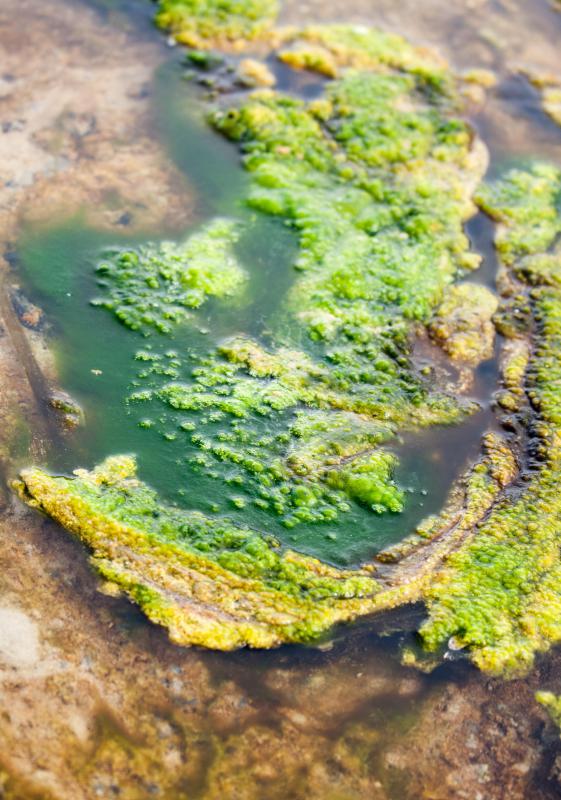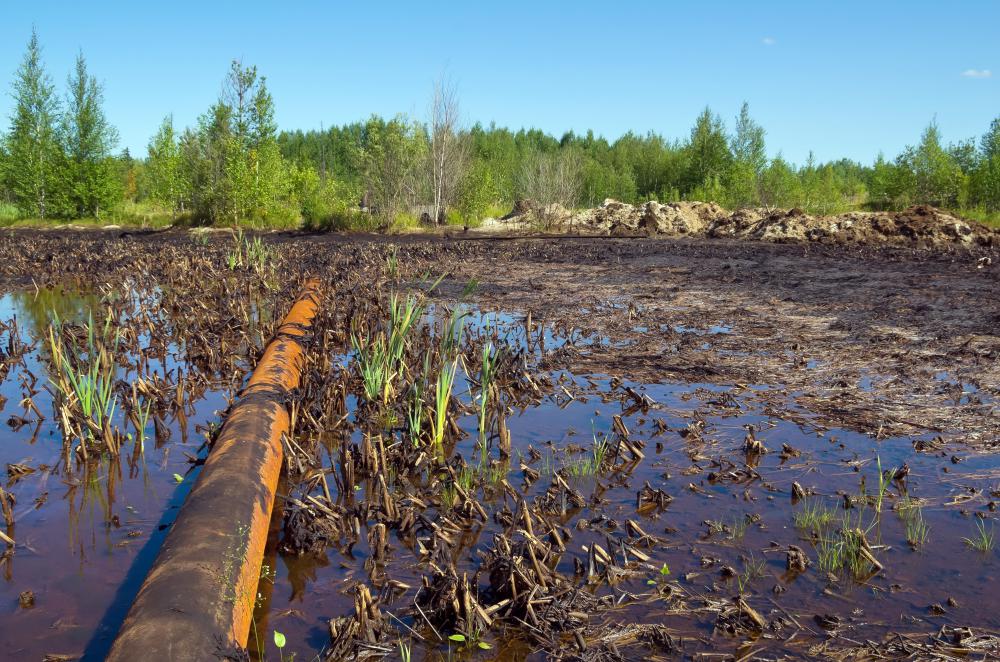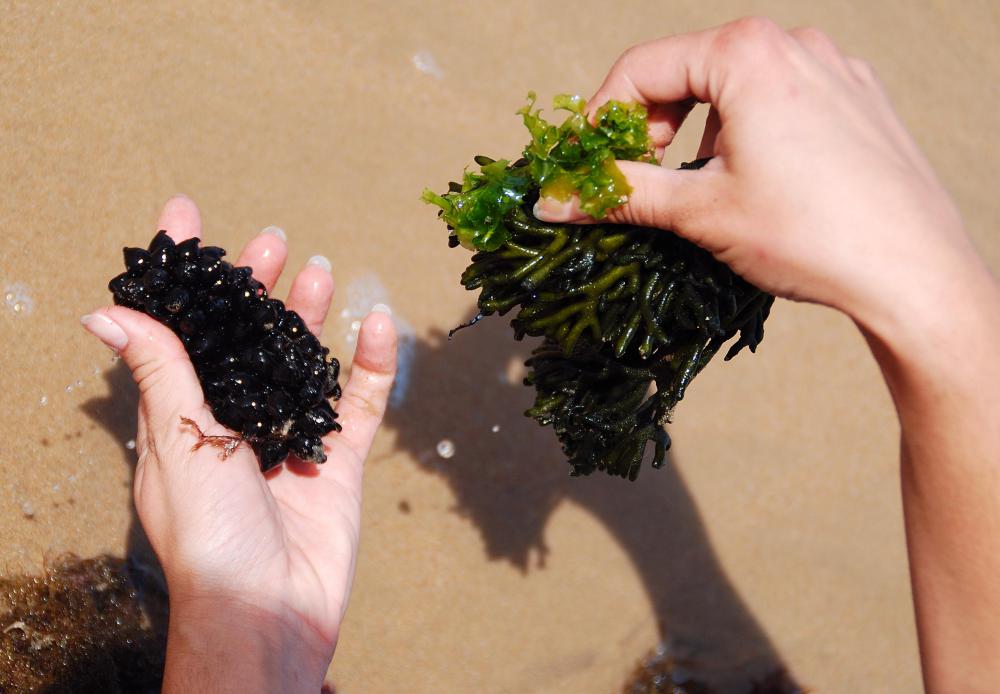At AllThingsNature, we're committed to delivering accurate, trustworthy information. Our expert-authored content is rigorously fact-checked and sourced from credible authorities. Discover how we uphold the highest standards in providing you with reliable knowledge.
What is Algaculture?
Algaculture is a technique used to cultivate certain types of algae, primarily microalgae like phytoplankton, which are easy to grow under controlled conditions. There are a variety of uses for algae, both wild and cultivated, making algaculture a potentially profitable line of pursuit in some regions of the world. Several companies have active algaculture farms, and many also sell supplies to people who want to farm their own algae at home.
This technique is considered a branch within the larger family of aquaculture, the cultivating of aquatic organisms. Aquaculture can be challenging, as people must be able to replicate the natural conditions needed by such organisms in tightly controlled environments while also generating a profit. Not all creatures are suitable for aquaculture; microalgae seem to do very well in algaculture facilities, leading biologists to believe that it has great promise.

In an algaculture facility, farmers create a contained environment with a nutritious growth medium and a substrate to grow on, and then “seed” it with algae. The algae can be harvested in a variety of ways; many algaculture facilities use convenient screens as a growth medium, simply pulling the screens out when they fill with algae. In a well-maintained farm, regular harvests could be made possible with the use of rotating pens, ensuring a year round crop.

One of the most obvious uses of algaculture is for nutritional supplements and food, given that algae has been used as part of the human diet in many regions of the world for centuries. Algae can also be used to produce bioplastics, fuels, and certain pharmaceutical products; the controlled environment increases efficiency, ensuring that only the most suitable algae are cultivated, and allowing farms to produce enough algae to make harvesting the algae profitable. The high volume also make it possible for people to invest in the research and equipment needed to utilize the algae.

Algae farms can also potentially be used to mitigate pollution. In areas where excessive nutrients enter the ocean, for example, algaculture facilities could be established to sop up the nutrients while producing a useful product, thereby preventing die-offs further out to sea. Many species of algae can also process pollutants such as spilled oil and chemicals, so mobile algae farms could be used to respond to spills and other pollution issues, with the resulting algae being used in a non-food capacity.
Frequently Asked Questions
What exactly is algaculture?
Algaculture is the cultivation of algae for various purposes, including biofuel production, dietary supplements, cosmetics, and even wastewater treatment. It involves growing algae in controlled environments to harness their rapid growth and ability to convert carbon dioxide into biomass through photosynthesis.
Why is algaculture considered important for sustainable development?
Algaculture is pivotal for sustainable development because it offers a renewable resource that can help reduce carbon emissions and dependence on fossil fuels. Algae grow quickly and can be cultivated on non-arable land, making them an efficient source of biofuel and other products without competing with food crops for land.
Can algaculture help combat climate change?
Yes, algaculture can combat climate change by absorbing carbon dioxide during photosynthesis. Algae can sequester CO2 more effectively than terrestrial plants, and when used as biofuel, they release only the carbon they previously captured, making it a carbon-neutral energy source.
What are the main products derived from algaculture?
The main products derived from algaculture include biofuels like biodiesel and bioethanol, nutritional supplements such as omega-3 fatty acids, natural pigments, and proteins for animal feed. Algae are also used in cosmetics and pharmaceuticals, and their extracts can serve as natural fertilizers and water purifiers.
How does algaculture compare to traditional agriculture in terms of resource usage?
Algaculture is generally more resource-efficient than traditional agriculture. Algae require less water and land, and many species thrive in brackish or wastewater. They do not need freshwater or fertile soil, allowing cultivation in areas unsuitable for traditional crops, thus preserving valuable resources for food production.
What are the challenges facing algaculture?
Despite its potential, algaculture faces challenges such as high initial setup and operational costs, the need for technological advancements to scale up production, and the development of cost-effective harvesting and processing methods. Additionally, controlling contaminant species and maintaining optimal growing conditions are critical for successful cultivation.
AS FEATURED ON:
AS FEATURED ON:













Discuss this Article
Post your comments